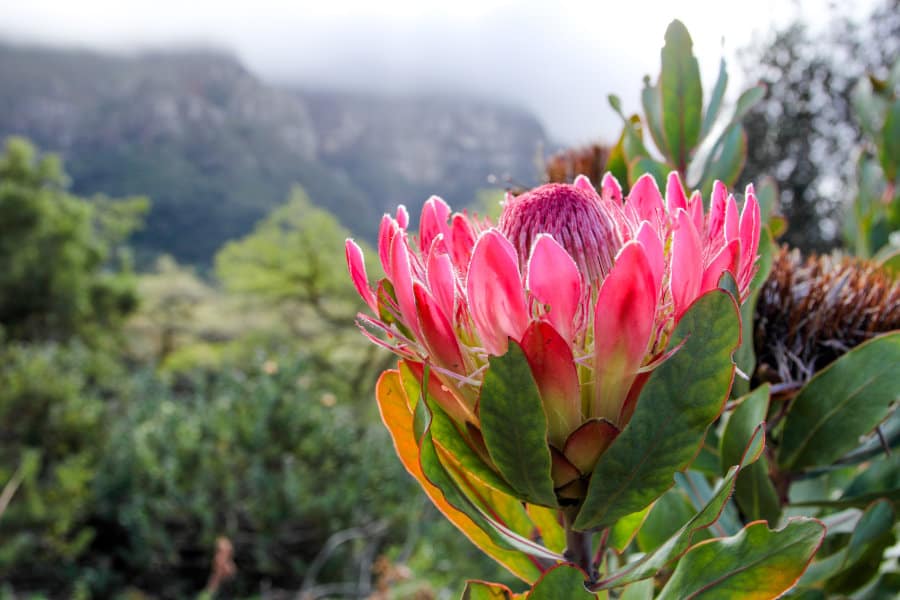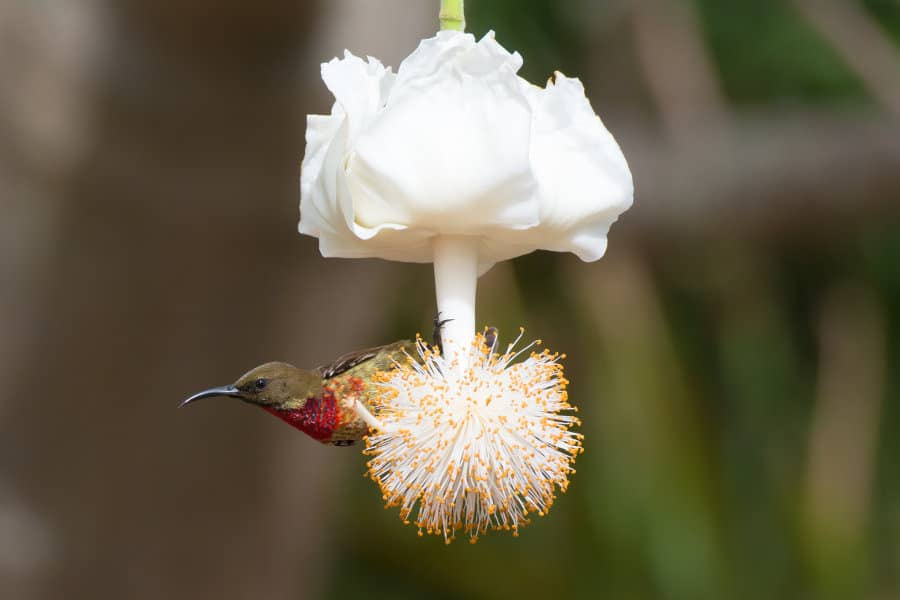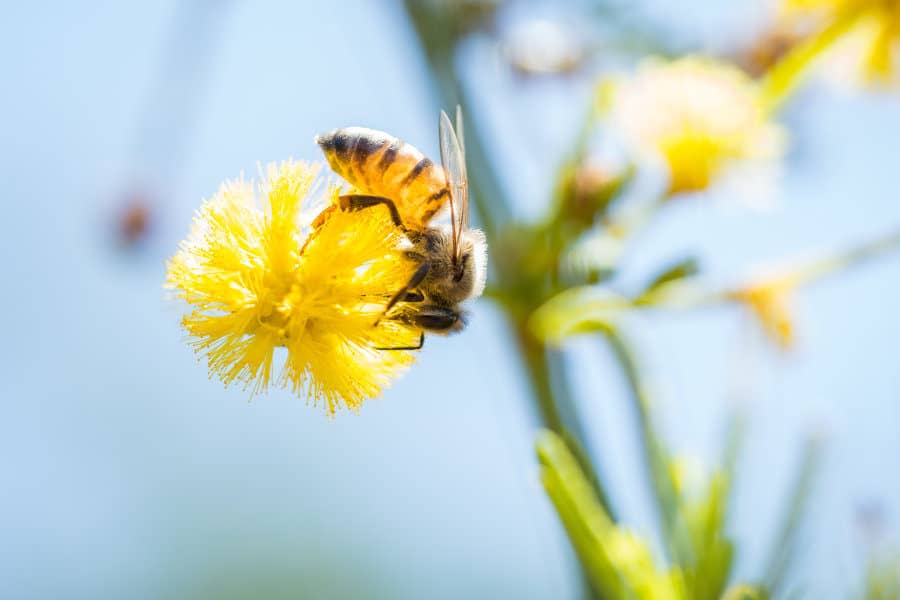Candelabra trees are one of the world’s most striking organisms. Breathtaking to behold, these trees mark the African savanna with their yellow flowers and surreal shape.
These trees have been known to save rhinos from drought. They provide the poison for Khoisan arrow tips and are also a wonderful addition to any tropical garden.
Here’s the complete candelabra tree guide, including some remarkable stories about this tree in the wild.
An Introduction to the Candelabra Tree

Candelabra tree, the more colloquial or common name of Euphorbia ingens is found all over the world. This mysterious, yet strangely alluring tree was named after a Greek physician, Euphorbus, who discovered the plant in the Atlas mountains.
The name candelabra was given to Euphorbia ingens because they look like (obviously…) candelabras. Just admire the upward, clumped together branches of the tree. In addition, yellow flowers form on the tree’s ridges, completing a visual comparison to burning candles.

True for all Candelabra trees is the fact that they cannot stand the cold. Anything below 10-12 degrees Celsius and you’ll not see the candelabra tree. However, it does survive indoors, especially in greenhouses or conservatories. So a candelabra is an ideal indoor addition for those who live in countries with a chilly climate.
Gardeners in warm regions love candelabra trees as they are so easy to grow and make wonderful structural, almost architectural additions to gardens. They require very little attention as they are water wise and can survive off mere drops.
A Tree that Saves Rhinos and Supports Monkeys

The candelabra tree not only has beautiful flowers, but will also bear fruit in optimum conditions. Monkeys are known to eat the fruit of the candelabra between August and November. However, the feasting from this tree doesn’t stop there.
Cane rats and porcupines sometimes eat the tree’s roots and there are some bird species who eat the seeds of the fruit. This is amazing since the candelabra tree actually has a defence mechanism that keeps many animals away. On the African savanna, candelabra trees produce a poisonous latex or sap and this largely keeps it free from browsers.
There are no recorded fatalities from ingesting the sap of the candelabra tree, but contact with the latex is known to cause a nasty skin irritation. When it gets in contact with your eyes it can cause blindness. In severe cases it can make the animal or human that ingests it very, very ill.
However, there is documented evidence that a candelabra tree kept two black rhinos alive in Liwonde National Park, Malawi. This happened during a severe drought in 1997. The rhinos could not drink as there was no water – so they fed from the tree and sucked out moisture from within the plant.
What You Need to Know About Identifying Candelabra Trees

Candelabra trees are easy to find, when you know what you’re looking for. Let’s look at some of the key characteristics of these beautiful trees.
They are fast growing trees and can reach heights of up to 12 meters, making them easy to spot on the landscape. The trunk of the candelabra tree is very thick and the candelabra branches can make up half or more of the tree’s total height.
Flowering usually happens during the winter months and they get quite a lot of attention from insects, especially butterflies and bees who help to pollinate.
The poison isn’t always bad – people have used it for many millennia
It’s true that the sap of the candelabra tree is poisonous, but that’s not the whole story. Euphorbus, the Greek physician, was said to use it as a powerful laxative.
The Khoisan, a tribe native to the Western Cape of South Africa, named the candelabra tree “Gnap” which means powerful. They would tip the ends of their hunting spears into the sap in preparation for hunting.
The Venda and Sotho people of South Africa are believed to use the sap to treat more serious diseases such as cancer.
Early fishermen used the poisonous sap to stun fish so they could then catch them by hand. A little poison in the water paralysed the fish so they didn’t need any other bait. Amazing, right?
Where Can You Find Candelabra Trees?
Candelabra trees can be found all over the world, from Africa to Mexico. The commonality is always hot and dry conditions. They simply thrive in areas where water is scarce and temperatures soar.
There are many sub-species of these trees and each has evolved to a distinctive geographical area.
Transvaal candelabra tree – Euphorbia cooperi
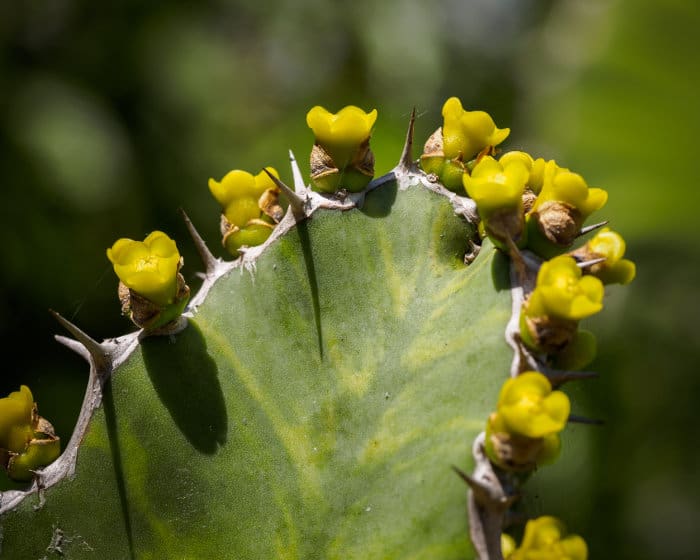
Also called the bushveld candelabra tree, this species grows up to 7 m tall. This candelabra tree appears more succulent with a grey trunk that stands up to 3 m high.
The bushveld or Transvaal candelabra tree is native to Southern Africa and is loved by locals and safari goers for its structural features. They prefer wooded grassland or rocky areas and are most commonly found in KwaZulu-Natal, but also Swaziland and Limpopo.
You can find many of them in the Lebombo Mountains in and around Kruger National Park.
Swanepoel – Euphorbia otjingandu
Swanepoel is a relatively new species of candelabra tree from Kunene Region in the far northwest of Namibia. Not much is known about it, although not much is known about anything in Namibia’s northwest – it’s one of the world’s most sparsely populated places.
The tree is very hardy and robust, and thrives in dry and hot conditions. They don’t grow as tall as the others, but share all of the same characteristics.
African candelabra – Euphorbia ammak

This giant candelabra, also known as the desert candelabra, grows to a striking 10 meters in optimum conditions. Like the rest of the Euphorbia family, the African candelabra loves dry desert heat with rocky undertones for good measure.
Sadly, you’re more likely to find this magnificent candelabra tree in domesticated conditions, i.e. peoples’ homes and gardens rather than in the wild. The Euphorbia ammak was added to the IUCN Red List of Threatened Species in 1998.
For a glimpse of one in the wild, your best bet is Yemen or Saudi Arabia.
Take a Candelabra Tree Home
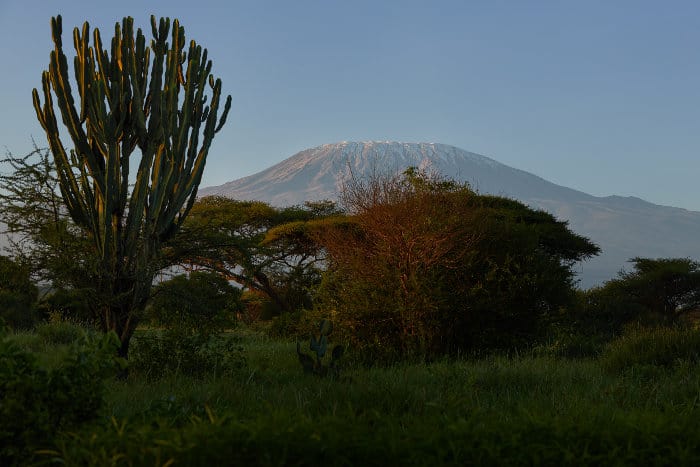
Candelabra trees are super easy to grow and make a wonderful addition to any garden, inside or out. Their structural qualities will elevate any living room, conservatory or study and give it that edge that’s bound to make your home the envy in the neighbourhood.
How do you keep a candelabra?
The candelabra tree loves
- Sun, sun and more sunshine
- Warmth
- Rocky gardens
The candelabra tree dislikes
- Too much water
- Too little sunshine
- Being cold, so if you live in a colder climate, take them indoors
It is important that you buy the tree from a nursery and do not propagate from a wild tree – if everyone stole from the wild there would be none of these wonderfully robust trees left.
Witnessing the tree flower in its natural habitat is also a superb visual highlight of a trip to Southern Africa.

